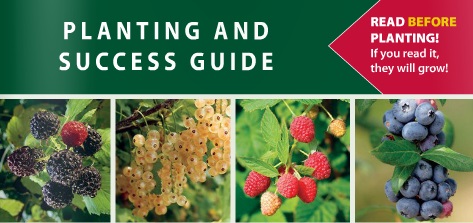Again this year, growers in many locations throughout the country, have seen near record breaking cold temperatures.
For information on strawberry winter injury, including assessment and management review, see our Spring 2018 Newsletter article available on online or email akowaleck@noursefarms.com for a copy of the article. A recap of key items from that article:
1. To assess damage, sample production by cutting the crown from top to bottom.
2. Injury levels can range from brown flecking on crown (mild) to major extensive dame if the crown is dark brown and corky.
3. Damage can be managed to ensure you do get a good strawberry crop, including appropriate moisture and nutrient levels.
Brambles
• With raspberries and blackberries, winter injury can appear in a variety of ways. Very cold temperatures during the winter can kill overwintering floricanes and damage the crown and root system in extreme cases. Late frost in spring can result in injury or even death of flower buds on floricane-fruiting varieties, drastically impacting yield.
• The most typical form of winter injury, however, results from fluctuating temperatures during the dormant season. This injury occurs after plants have achieved their chilling requirements and are no longer fully dormant. Variable temperatures during the winter tend to damage less cold-tolerant tissue. March can often be when injury occurs as you see more fluctuating temperatures, rather than in mid-winter when plants are totally dormant.
• Winter injury typically kills or damages the overwintering floricanes but not new primocanes. There are a variety of methods for assessing winter injury that allow you to evaluate the extent prior to spring pruning. One of the simplest methods including cutting bud lengthwise (tip to base), as buds have begun to swell to check for blackened centers or damaged tissue.
• Winter injury is prevented by making appropriate site selection, avoiding frost pockets, having good air drainage and planting sufficiently winter hard varieties for your area.
Our website is now open for orders for the 2024 season!
- Berry
Plants - Vegetable
RootsAsparagus Roots
Horseradish Roots
Rhubarb Crowns
- Grower
AccessoriesGift Certificates
Gift Certificates - a berry thoughtful idea!
Have a friend who admires your berry garden? A Nourse Farms Gift Certificate gets them on their way to their own fruitful adventure...

Nourse Farms Planting Guide
If you read it, they will grow!
We include our very own Planting Guide with every order. It's a great resource for our customers, and it will lead you thrrough the entire planting process.
- Commercial
Growers.
Spring 2024 Commercial Newsletter
Packed with information to help you review varieties and be successful.
- Growing
Info - Customer
ServiceWhy Nourse Farms?
Visit or contact us
Fresh Picked


